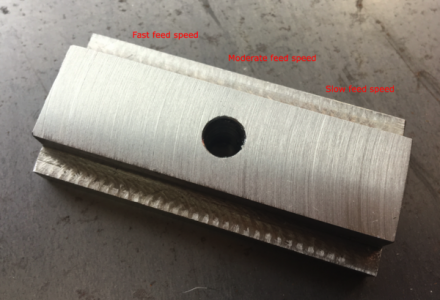- Joined
- Jan 20, 2018
- Messages
- 5,916
I read something somewhere (lol) that said HSS needs faster speeds (like 1500+rpm). During my geometry tests, I try low and high speeds.
If by diameter you mean, the circle the cutting point turns around, I think it's something like 3-4". Is this something I can look up in Machinery's Handbook? (I have a copy, but have no experience in using it as a tool)
Yes, the diameter of the circle that the cutting point turns. The appropriate rpm is determined by the diameter of the cutter, the larger the cutter, the lower the rpm must be. In my previous post, I gave an approximate formula for determining the correct rpm based upon the cutting speed of the material (in surface feet per minute) and the diameter of the cutter. The formula is: Cutting speed (of material) x 4/diameter. This is for high speed steel cutters, carbide can be run 2-10 times as fast.
The cutting speed of C1018 steel is given as 80-100 sfm (surface feet per minute). 4x80=320/4 (diameter of cutter)=80 rpm.
You may find higher cutting speeds listed in different charts, I tend to be conservative to prolong cutter life.
This formula is used for any type of high speed cutter including lathe tools, drills etc. Memorize the formula. For quick reference, a 1 in. diameter drill should be run at 320 rpm, 1/2 in. at 640 and 1/4 in. at 1280. Remember these numbers and you will never be very far off.
I think your grind is fine, you're just running the cutter much too fast. As I suggested before, with a fly cutter of this diameter, you would be better served with a brazed carbide bit.


